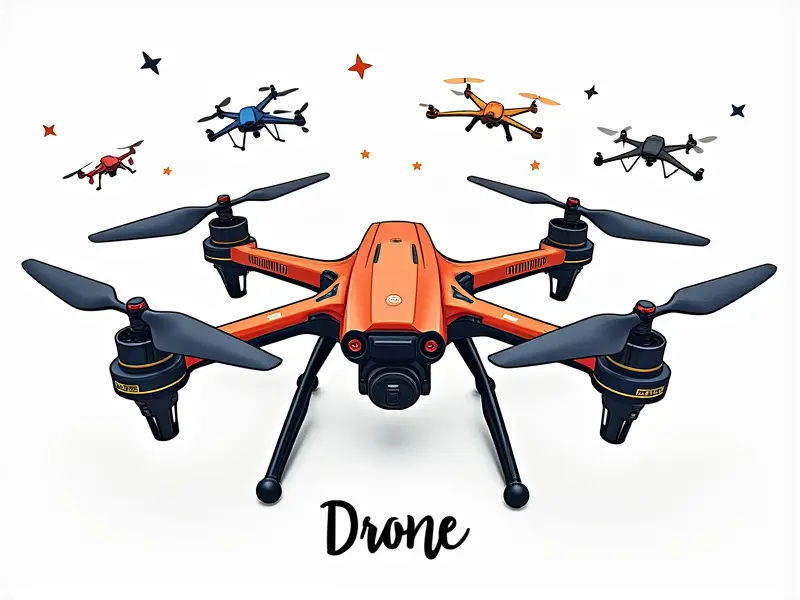How to avoid drone collisions?

How to Avoid Drone Collisions
Top Tips to Avoid Drone Collisions
Flying a drone requires careful planning and adherence to safety guidelines. Here are some top tips to ensure you maintain collision-free flights:
- Know the Regulations: Familiarize yourself with local, national, and international regulations regarding drone operation.
- Choose Safe Flight Paths: Plan your flight routes carefully to avoid high-traffic areas such as airports, stadiums, and busy streets.
- Use Obstacle Avoidance Technology: Equip your drone with advanced sensors that can detect obstacles in real-time.
- Maintain Visual Line of Sight: Always keep the drone within visual range to monitor its movements accurately.
- Avoid Weather Hazards: Check weather forecasts before flying and avoid conditions like strong winds or heavy rain that can affect your drone's stability.
Stay Safe: Avoid Drone Collisions
Safety is paramount when operating a drone. Here are some essential practices to ensure you stay safe during flights:
- Conduct Pre-Flight Inspections: Regularly check your drone for any mechanical issues or loose parts that could cause accidents.
- Use GPS Locks: Ensure your drone is properly calibrated and has a strong GPS signal to maintain stability during flights.
- Avoid Flying Near People: Keep the drone away from crowds to prevent any accidental injuries or property damage.
- Communicate with Local Authorities: Inform local air traffic control or police about your planned flight, especially in restricted areas.
Mastering Collision-Free Drone Flying
To become proficient at collision-free drone flying, consider the following strategies:
- Practice Regularly: The more you fly, the better you understand your drone's capabilities and limitations.
- Leverage Flight Simulators: Use simulators to practice different scenarios without risking real-world accidents.
- Learn from Experienced Pilots: Seek advice and guidance from seasoned drone operators who can share valuable insights.
Navigating Safely in the Sky
Flying a drone safely involves understanding airspace regulations and navigating through various environments. Here are some key points to consider:
- Understand Airspace Classes: Different areas have different restrictions based on their classification (e.g., Class B, C).
- Avoid Controlled Airspaces: Stay clear of airfields and other controlled airspace where manned aircraft operate.
- Use Flight Planning Tools: Utilize apps like Skyward or Kittyhawk to plan your flights within legal boundaries.
Drone Safety: Avoiding Airborne Hazards
Avoiding airborne hazards is crucial for safe drone operation. Here are some tips:
- Monitor Other Aircraft: Keep an eye out for other drones and manned aircraft to avoid mid-air collisions.
- Use Visual Observers: Employ additional team members to help spot potential hazards that you might miss.
- Avoid Flying at Night: Unless permitted, refrain from flying your drone after sunset when visibility is reduced.
Preventing Mid-Air Drone Crashes
To prevent mid-air crashes, follow these guidelines:
- Keep Batteries Charged: Ensure your drone's battery levels are sufficient to complete the flight without running out of power.
- Check for Software Updates: Regularly update your drone’s firmware and software to benefit from new safety features.
- Avoid Overloading Your Drone: Do not exceed the recommended payload limits, as this can affect stability and performance.
Techniques to Avert Drone Collisions
Several techniques can help you avoid drone collisions. Here are some effective methods:
- Use Collision Avoidance Systems: Invest in technology that alerts you when your drone is near obstacles or other aircraft.
- Leverage Geofencing Technology: Set up virtual boundaries to prevent your drone from entering restricted areas.
- Practice Emergency Protocols: Know how to perform emergency landings and recoveries in case of unexpected situations.
Strategies for Drone Safety Flying
To ensure safe flying, consider these strategies:
- Create a Pre-Flight Checklist: Develop a checklist that covers all necessary safety checks before each flight.
- Stay Informed About Local Regulations: Regularly check for updates to local regulations and guidelines.
- Participate in Safety Training Programs: Enroll in courses offered by reputable organizations to enhance your skills and knowledge.
Essential Guide to Drone Safety
This guide offers a comprehensive overview of drone safety practices. By following these guidelines, you can significantly reduce the risk of collisions and ensure safe operation:
- Familiarize Yourself with Emergency Procedures: Know how to handle unexpected situations like loss of control or battery failure.
- Maintain Regular Maintenance: Keep your drone in top condition by performing routine maintenance checks.
- Communicate Effectively: Clearly communicate with team members and local authorities about your flight plans and any potential risks.
Fly Smart, Avoid Drone Hits
To fly smart and avoid drone hits, consider the following advice:
- Choose Appropriate Flight Times: Opt for times when there is less air traffic to minimize collision risks.
- Use High-Quality Equipment: Invest in reliable drones with robust safety features and sensors.
- Stay Updated on Best Practices: Continuously educate yourself about the latest drone safety protocols and technologies.
Tips to Prevent Drone Mid-Air Hits
To prevent mid-air hits, follow these practical tips:
- Avoid Flying in Crowded Areas: Stay away from places with high foot traffic or other drones.
- Use Real-Time Tracking Tools: Employ apps that provide real-time tracking of your drone’s location and altitude.
- Conduct Regular Risk Assessments: Evaluate potential hazards before each flight to identify and mitigate risks.
Conclusion
Safely operating a drone requires adherence to strict safety protocols, regular maintenance, and continuous learning. By following the guidelines outlined in this guide, you can significantly reduce the risk of collisions and ensure safe operation. Remember that staying informed about local regulations and best practices is crucial for maintaining compliance and operational excellence.

